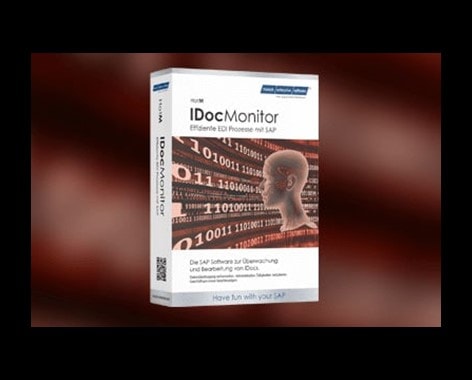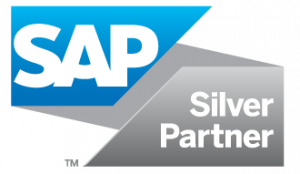SAP IDoc Transactions
How to use IDoc processing correctly
IDoc Transaction Overview – By default, there are numerous transactions for IDoc processing and development in an SAP system. In the following table, we have recorded and structured the most important SAP IDoc transactions. Below you will find a brief description of the transaction in SAP Standard.
Take a look at the other posts in our blog. There you will learn how to keep your system permanently in a consistent state and other tips and tricks.
Table of Contents

Important IDoc transactions
| WLF_IDOC | IDoc Processing | This is the latest and most comprehensive transaction in the IDoc environment. Here are the features from transactions WE02, BD87 and WE09. This transaction is available with the EHP 5 SP 10 in ECC 6.0. New features are also integrated, such as .B optimized content search, bulk content replacement, IDoc comparison u. v.m. |
| WE02 | Show IDoc | Display of IDocs: This transaction can be used to display all incoming and outgoing IDocs. The IDocs are grouped by direction, base type and status and can be monitored here. By double-clicking on an IDoc, this IDoc can be displayed in detail. You can view each state set and segment with content. Depending on the permission, the IDocs can be changed in your values. The original IDoc is stored under a new IDoc number and the status of the edited IDoc adds up to unprocessed. An IDoc with the status of a green light can no longer be edited. |
| WE05 | IDoc Lists | Like transaction WE02. No significant differences in content. |
| WE06 | Active IDoc monitoring | Active IDoc monitoring as of Release 6.10 |
| BD87 | Status Monitor for ALE Messages | This is the most important transaction for processing IDocs. Here, the IDoc direction is determined first by the state and then by the base type. IDocs can also be edited from this transaction, but the transactions WE02 or WE05 are much clearer for analysis. When processing an IDoc, further options can be selected here, such as the light play of IDocs, e.B. if it is booked via folder processing. The traffic jams can also be set to “no further processing”. |
| RZ20 | CCMS Monitoring – Overview Monitor Collection | CCMS Monitor Collections – CCMS stands for Computer Center Management System. This transaction is the first step into Netweaver’s monitoring. These mounts can be used to monitor SAP and non-SAP systems. |
| RZ21 | CCMS Customzing Monitor Architecture |
IDoc Administration |
| WE20 – Partner Contracts |
| WE21 Port description |
| SM59 – RFC Destinations (Display & Maintenance) |
| SM58 – Asynchr. Rfc |
IDoc Selection |
| WE07 – IDoc Statistics |
| WE09 – Find IDocs through content |
| WE10 – IDocs about searching for content |
| WE11 – Delete IDocs |
IDoc Test Tools |
| WE19 Test Tool |
| WE15 – Test output processing from NAST |
| WE14 – Test output processing |
| WE18 – Create status file |
| WE17 test status file |
| WE12 – Test modified input file |
| WE16 – Test input file |
IDoc Documentation |
| WE60 – Documentation for IDoc Types |
| WE64 Documentation Message Types |
IDoc Development Tools |
| WE31 – Development IDoc Segment |
| WE30 – Development IDoc Type |
| WE81 Logical Message Types |
| WE82 – Assignment messages to the IDoc type |
| WE41 – Operating Codes Output |
| BD51 – Maintenance of input function blocks |
| WE57 – Assignment messages to App. Object |
| WE42 – Process Codes Incoming |
IDoc conversion rules |
| BD62 – Defining the Segment Implementation Rule |
| BD79 – Care IDoc Implementation Rules |
| BD55 – Maintaining Intermediate Document Implementation |
IDoc reclassification rules |
| WE70 Reclassification: Basic Types |
| WE71 Reclassification: Extensions |
| WE72 – Reclassification: IDoc Types |
| WE73 – Reclassification: log. Messages |
IDoc Other |
| BDM2 – Monitoring: IDOCs at the receiver |
| BDM7 – ALE Audit: Statistical Evaluations |
| SARA Archive Management |
| IDOC – IDoc: Repair and test programs |
Related SAP Transactions with Descriptions
| soon | ALE development | Submenu for the development of ALE processes. This combines transactions that are important for the development of ALE processes. |
| Bale | Submenu for managing | Submenu for monitoring ALE processes. Here are summarized transctions that are important for the management of ALE processes. |
| Sale | View ALE-Customizing | Display of IDoc Interface / Application Link Enabling (ALE) – Area menu for defining ALE scenarios. Here you will find all important settings for logical systems, business process modeling, master data distribution, distribution models and much more. |
| SM59 | RCF Objectives | Overview and maintenance for RFC targets. Here you can see which systems are addressed by the corresponding port of the partner agreement in the IDoc outbound processing. Other system connections can also be set up here. |
| BDMONIC, BDMONIC2 and BDMONIC3 | Maintenance ALE CCMS Monitor Objects | ALE/ CCMS Customizing Monitor Objects, ALE CCMS Monitor Bounce |
| WE09 | Search IDocs about content | Display of IDocs: This transaction can be used to display all incoming and outgoing IDocs. Here you can also select the content of IDocs. To do this, you must specify the corresponding segment with field and content. |
| WE19 | Test tool | This transaction is very important when developing and testing IDoc scenarios. Here IDocs can be easily copied and then edited. After completion, these can then be fed according to the input or output processing. This feature can also be used in production mode to rerecord IDocs that cannot be edited according to the requirements of we02. |
| WE20 | Partner agreements | This transaction defines the partner agreement for each IDoc process. Each partner agreement provides scope for inbound and outbound processes. This determines which processing routines are used. |
| WE21 | Port description | For all outgoing IDocs, a port must be defined in the partner agreement. The port determines to which system the message is sent. You can also place the outgoing messages on a file system and have them picked up by a partner system. |
| WE60 | Documentation for IDoc types | This transaction provides detailed content and technical documentation for all basic types, extensions and segments. These can also be saved in HTML format. |
| WE64 | Documentation message types | Defined operation codes for incoming and outgoing messages. The operation codes are used in the partner agreements. The corresponding message types are assigned to the operating codes and the function block is used for processing. |
| Wedi | EDI base | Submenu for the management and development of IDoc processes. This summarizes transactions that are important for IDoc processing. |






